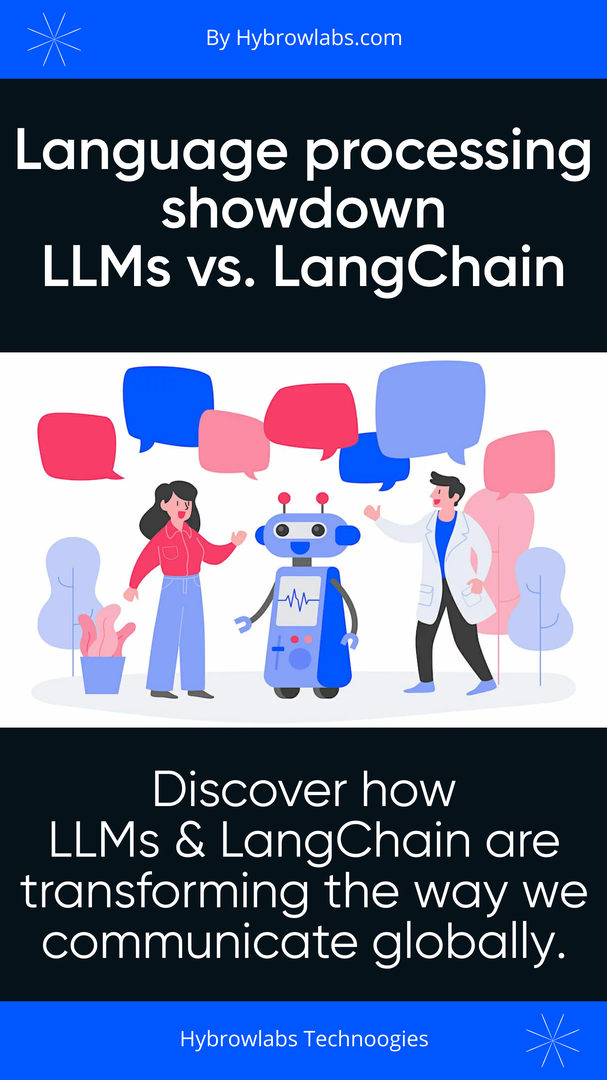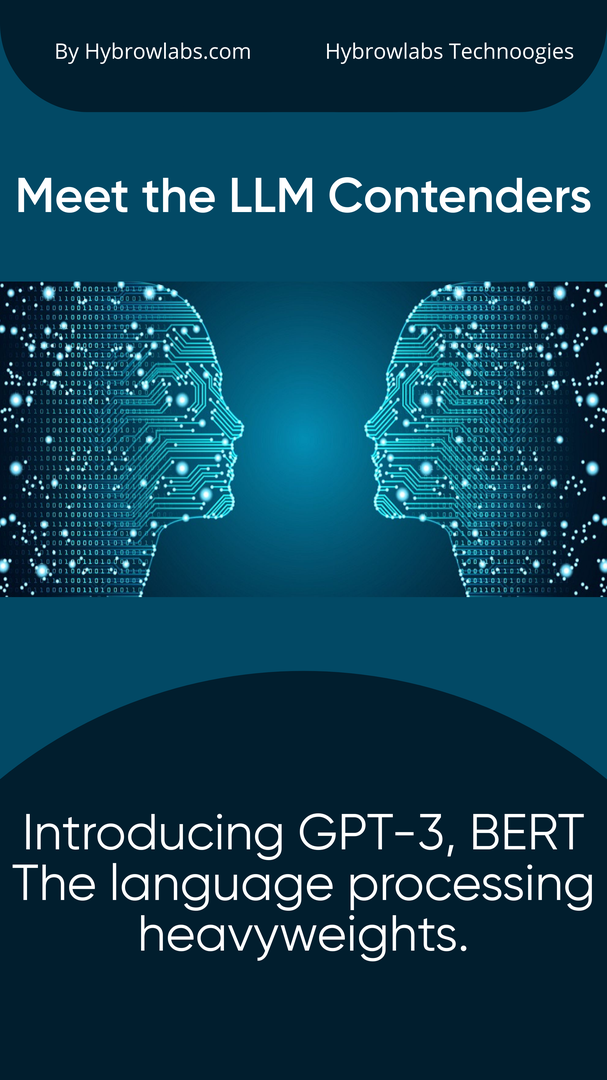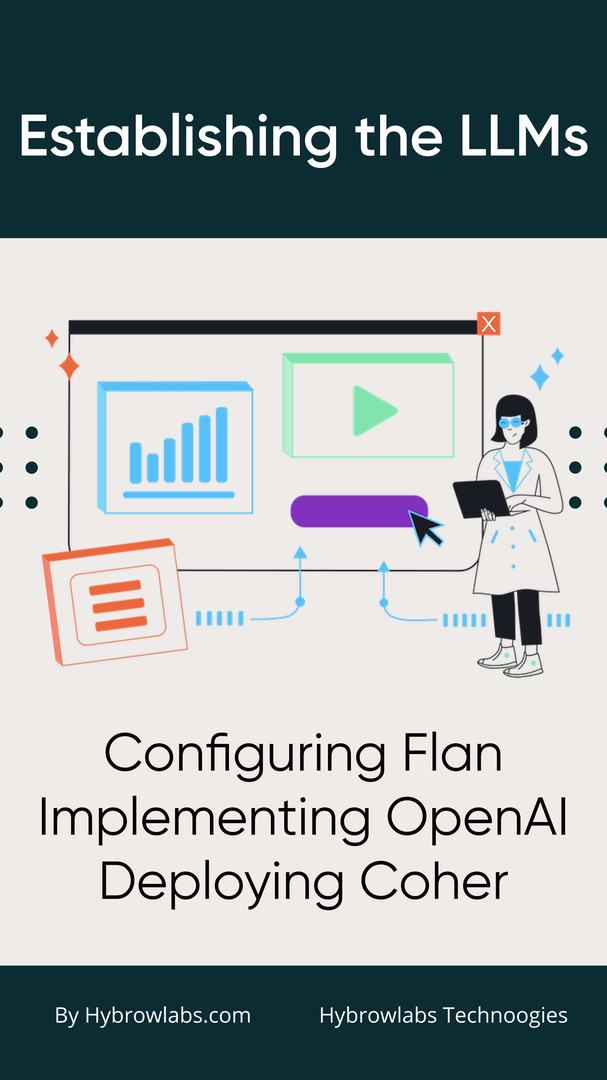
Language processing technologies have revolutionized the way we communicate, making it easier for individuals & businesses to interact with one another across the globe. In recent years, two of the most powerful language processing technologies that have emerged are LLMs & LangChain.
LLMs or Large Language Model are a class of machine learning algorithms that are designed to understand natural language processing. These algorithms are trained on vast amounts of text data & can perform a range of language-related tasks such as generating text, answering questions, & carrying out language translation. LLMs have become a crucial component of many modern technologies such as virtual assistants, search engines, & chatbots.
On the other hand, LangChain is a decentralized network that employs blockchain technology to provide secure & scalable language processing services. LangChain enables businesses & organizations to access language processing services that are secure & can be customized to their specific needs. LangChain uses smart contracts to manage language processing services, ensuring that transactions are transparent, & the data is secure.
With both LLMs & LangChain providing innovative solutions to language processing challenges, it's important to compare & contrast these technologies to understand which one would be best suited for specific needs. This article aims to provide an in-depth analysis of LLMs & LangChain, their strengths & weaknesses, & how businesses & organizations can utilize these technologies to improve their language processing capabilities.
Comparing & Evaluating different LLMs:

When it comes to building a web-based application that utilizes language models, it's essential to choose the right model for your application's specific needs. In this section, we will compare & evaluate some of the most popular language models currently available.
1. GPT-3 (Generative Pre-trained Transformer 3):
GPT-3 is a highly advanced language model developed by OpenAI. It's one of the most powerful language models currently available & can perform a wide range of tasks, including text completion, summarization, translation & conversation generation. Its strength lies in its ability to understand context & generate natural-sounding responses.
2. BERT (Bidirectional Encoder Representations from Transformers):
BERT is a highly versatile language model that can perform various tasks, including text classification, question answering & sentence completion. Its strength lies in its ability to understand complex language structures & relationships between words.
3. Flan:
Flan is a relatively new language model that has gained popularity due to its high efficiency & customization options. It's built on a unique neural network architecture that enables it to generate high-quality text quickly. Flan is well-suited for tasks such as text classification, summarization & content generation.
4. OpenAI:
OpenAI is a versatile language model that can perform a wide range of tasks, including language translation, chatbot development & content creation. Its strength lies in its ability to understand context & generate natural-sounding responses.
5. Cohere:
Cohere is a relatively new language model that focuses on tasks that require complex reasoning & knowledge-based inference. Its strength lies in its ability to understand complex concepts & generate intelligent responses.
Choosing the right language model depends on your application's specific requirements. If your application requires high efficiency & customization, Flan is an excellent option. If you need a versatile model capable of handling multiple tasks, OpenAI is a great choice. & If you need a model that can handle complex reasoning & inference tasks, Cohere is a suitable option.
To implement these models, you will need to choose a programming language that supports the models you want to use. Most language models are developed using Python & there are several libraries available, including TensorFlow, PyTorch & Hugging Face, that make implementing these models square.
For example, to use OpenAI's GPT-3 model, you can use the OpenAI API, which provides access to the model through a simple RESTful API. Here's an example of how to use the API to generate text:
import openai openai.api_key = "YOUR_API_KEY"prompt = "Once upon a time," completions = openai.Completion.create(engine="davinci", prompt=prompt, max_tokens=50)message = completions.choices[0].textprint(message)
This code will generate a short text completion based on the prompt "Once upon a time" using the OpenAI GPT-3 model.
Setting Up the LLMs:

One of the essential aspects of building a web-based application that incorporates language models is setting up the language models themselves. In this section, we will go through the process of setting up three different language models: Flan Models, OpenAI Models & Cohere Models.
A. Setting Up Flan Models:
Flan Models is a collection of pre-trained language models that can be fine-tuned for specific tasks. To use Flan Models, we need to first install the Flan library using pip:
pip install flan
After installing the library, we can use the following code to load a pre-trained Flan model:
from flan import FlanModel model = FlanModel.from_pretrained("flan-base")
The above code loads the Flan base model, which is a pre-trained language model. We can then fine-tune the model for specific tasks such as sentiment analysis, text classification, or question answering.
B. Setting Up OpenAI Models:
OpenAI is a well-known research company that has developed several powerful language models, including GPT-3. To use OpenAI models, we need to first sign up for an API key from the OpenAI website.
After obtaining the API key, we can use the following code to install the OpenAI library & authenticate our API key:
pip install openai import openai openai.api_key = "INSERT_YOUR_API_KEY_HERE"
Once we have authenticated our API key, we can use the following code to load a pre-trained OpenAI model:
model_engine = "text-davinci-002"prompt = "Hello, World!"response = openai.Completion.create(engine=model_engine, prompt=prompt, max_tokens=5)print(response.choices[0].text)
The above code loads the OpenAI text-DaVinci-002 model, & prompts it with the text "Hello, World!" & generates a response that contains up to five tokens.
C. Setting Up Cohere Models:
Cohere is a language platform that provides several pre-trained models for various natural language processing tasks. To use Cohere models, we need to first sign up for an API key from the Cohere website.
After obtaining the API key, we can use the following code to install the Cohere library & authenticate our API key:
pip install cohere import cohere cohere.api_key = "INSERT_YOUR_API_KEY_HERE"
Once we have authenticated our API key, we can use the following code to load a pre-trained Cohere model:
model = cohere.model("sentiment-analysis")
The above code loads the Cohere sentiment analysis model. We can then use the model to analyze the sentiment of a given text by using the following code:
result = model.predict("I love this movie!") print(result.sentiment)
The above code analyzes the sentiment of the text "I love this movie!" using the Cohere sentiment analysis model & returns a result that contains the sentiment score.
Setting up Comparison Lab:

Comparison Lab is a powerful tool that enables users to compare the performance of different AI models quickly & easily. In this section, we will discuss how to set up Comparison Lab using a Docker container. Docker is a popular tool for creating & running containers, which provides an easy & efficient way to package & deploy applications.
To get started with Comparison Lab, you will first need to install Docker on your machine. Once you have Docker installed, you can create a new container & install Comparison Lab using the following command:
docker run --rm -p 8888:8888 -v $(pwd):/app -it ml6team/comparisonlab:latest
This command will start a new container & mount the current working directory as a volume. You can then use the container to run Jupyter Notebooks & other Python scripts.
To use Comparison Lab within the container, you can clone the Comparison Lab GitHub repository & install its dependencies using the following commands:
git clone https://github.com/ml6team/comparisonlab.git cd comparisonlab pip install -r requirements.txt
After installing Comparison Lab & its dependencies, you can start using it to compare the performance of different AI models. The following code snippet shows how to use Comparison Lab to compare the performance of two different models:
import comparisonlab as cl model1 = cl.load_model("path/to/model1") model2 = cl.load_model("path/to/model2")cl.compare_models(model1, model2)
In this example, we load two different models using the load_model function & then compare their performance using the compare_models function. Comparison Lab will automatically measure the performance of the models & generate a report that shows how they compare.
One of the advantages of using Comparison Lab with Docker is that it makes it easy to deploy & manage multiple instances of the tool. For example, you can use Docker to create a containerized version of Comparison Lab that can be deployed to a cloud-based infrastructure such as Amazon Web Services or Google Cloud Platform.
Conclusion:

In conclusion, LLMs and LangChain are two of the most powerful language processing technologies that have gained significant attention in recent years. LLMs are deep learning models that use neural networks to analyze and generate natural language, while LangChain promises to use blockchain technology to build a decentralized network of language processing nodes.
Our comparison of LLMs and LangChain has shown that both technologies have their strengths and weaknesses. LLMs have been widely adopted and have demonstrated impressive results in various language-processing tasks. However, they require massive amounts of data and computing power, making them inaccessible to smaller businesses or individuals. On the other hand, LangChain's decentralized approach provides increased security, efficiency, and scalability while reducing the need for large amounts of data.
As these technologies continue to develop and improve, we can expect to see even more significant impacts on language processing and beyond. Industries such as healthcare, finance, and e-commerce have already begun to experience these effects. For a deeper understanding of how these technologies can be applied, consider exploring Hybrowabs Development Services.
FAQ
1. What are LLMs, & how do they differ from LangChain?
LLMs, or Large Language Models, are deep learning models that use neural networks to analyze & generate natural language. LangChain, on the other hand, is a language processing technology that uses blockchain technology to build a decentralized network of language processing nodes.
2. What are some potential use cases for LLMs & LangChain?
LLMs & LangChain have potential use cases in various industries, including healthcare, finance, e-commerce, & education. They can automate tasks such as text analysis, sentiment analysis, & machine translation.
3. Which technology is more accessible to smaller businesses or individuals?
LLMs require massive amounts of data & computing power, making them inaccessible to smaller businesses or individuals. LangChain's decentralized approach reduces the need for large amounts of data & may be more accessible to smaller entities.
4. Are LLMs & LangChain competitive or complementary technologies?
LLMs & LangChain have different approaches to language processing & can be seen as complementary technologies. While LLMs focus on deep learning & neural networks, LangChain uses blockchain technology to build a decentralized network of language processing nodes.
5. How will LLMs & LangChain impact the future of language processing?
LLMs & LangChain have already begun to impact various industries & will likely continue to do so as they develop & improve. They represent significant advancements in language processing, & their potential applications are vast, from improving communication & translation to automating complex tasks.






a3dc85.jpg)
.jpg)
fd8f11.png)


.jpg)
.jpg)